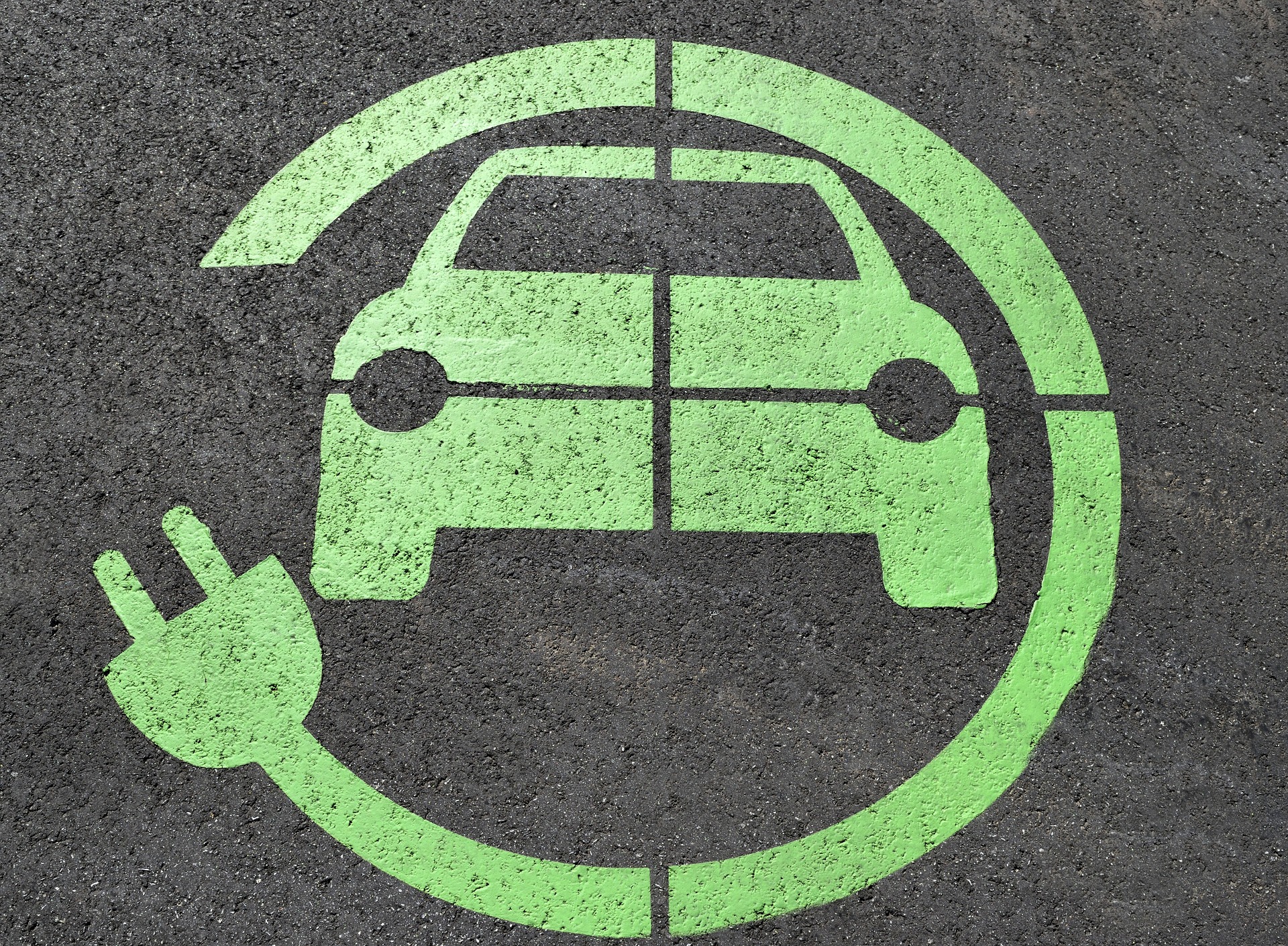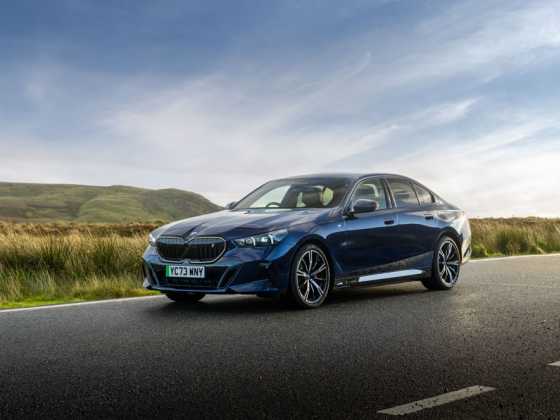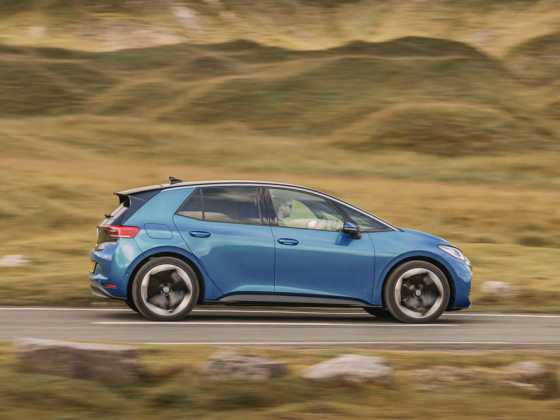Panel of Experts

Our panel of experts discuss some of the electric vehicle safety and charging concerns that can be dispelled through education, and look at what 2019 will have in store for the fleet market
The government has made it clear that it wants road transport to become as close to zero emission as possible, with an ambition for at least 50 per cent of new car sales and 40 per cent of new van sales to be ultra low emission by 2030. And with a number of new electric and hybrid models hitting the showrooms this year, the electric vehicle momentum is continuing to grow.
However, misconceptions still exist when it comes to electric mobility, and more education and training is needed if businesses and consumers are to confidently make the switch.
Safety considerations
The safety of electric vehicles is often cited as a concern, with people unsure about charging and what would happen in a crash. The safety of pedestrians is another issue, as electric vehicles are near-silent when at slow speeds and so could pose a risk to distracted walkers.
When it comes to charging electric vehicles, Tony Greenidge from IAM RoadSmart reminds us that dealing with any fuel poses a risk: “The handling and storage of fuel is not a totally risk-free business, but today we have tried and trusted systems that are easy to use while keeping the danger to minimum, and fires are a rare occurrence in modern vehicles. There’s no reason why electric vehicles and their charging equipment shouldn’t come to be viewed in the same way.”
He adds: “There have been one or two sensationalist headlines about EVs catching fire when on charge, and operation of any electrical equipment carries with it a risk, but there is no real reason why such risks cannot be mitigated by users following the correct procedures.”
As a fleet vehicle is an extension of the workplace, Peter Eldridge from ICFM urges that the same health and safety procedures are followed to ensure an employer’s duty of care. With an electric vehicle, this should include information on safe charging. He said: “The actual execution of safe vehicle charging procedure can be delivered in a variety of ways, including physical demonstration, interactive online training, and inclusion in the company vehicle policy.
“But the important requirement is to ensure that every driver involved signs a mandate to confirm that they have read and understood the requirements and that they are fully conversant with the safe process required.”
Turning attention to the installation side, Terry Mohammed from BMM Energy Solutions highlights the need for charge points to be installed correctly to ensure their safe use. He says: “Probably the most important factor regarding safety whilst installing chargepoints is having a comprehensive knowledge of current wiring regulations and understanding the risks associated with powering up a large piece of metal or carbon fibre whilst it is in contact with the general mass of earth. Electrically speaking, this is a relatively unique situation and one that comes with a unique set of rules and regulations in the form of a Code of Practice from The IET. Our technical director sits on the IET Advisory Panel and is constantly striving to improve electrical safety and ensure chargepoint installations are carried out correctly.”
A risk for pedestrians?
There is a fear that electric vehicles when moving slowly are a danger to pedestrians as they are near-silent. To address this, from July this year, all new electric and hybrid models seeking approval in Europe will have to emit a noise when travelling at low speeds, while existing vehicles will be gradually retrofitted with devices.
Peter explains the problem: “Research suggests that pedestrians are being exposed to higher risk, particularly people who are blind or have low vision. The quiet electric motors of electric vehicles make it difficult to hear, especially when the vehicles are travelling at low speeds. This can be a real problem in car parks and near driveways, especially for distracted pedestrians, children and the elderly.”
Tony comments: ”The quietness of EVs is seen by many as a benefit, both to those travelling in the vehicle and to those outside: noise is a form of pollution after all. The latest TV advert for the Volkswagen e-Golf openly suggests that the car’s quietness is a good thing, showing it gliding unnoticed past someone sitting on a park bench.
“However, any developments that have the potential to impact on pedestrian safety are of concern to us at IAM RoadSmart, and in principle we are supportive of the coming European legislation requiring electric vehicles to be fitted with a sound-emitting device to warn other road users of their approach.
“That said, vehicle manufacturers are currently taking various different approaches to the engineering of these systems, including the type of sounds emitted and whether or not the system can be switched off by the driver, and legislation that sets a definitive global standard still looks to be some way off.”
Installations
For organisations looking to install charge points, there are other, practical considerations to bear in mind aside from safety.
Terry advises that organisations need to give consideration firstly to what electric vehicles they anticipate to require now and in the future.
He explains: “The car or van dictates the maximum rate of charge they can take, not the chargepoint. For instance, a small delivery company may be contemplating some Nissan e-NV200 vans for last mile delivery. These vans will be parked at the depot over night and only have a single-phase onboard charger so there would be no point installing three phase charging when a bank of 7kw single phase chargepoints could charge the vehicles overnight.
“Another scenario could be local authority vehicles that only come into the depot for a few hours a day and are allowed home with the employee who doesn’t have access to off street charging. This situation could benefit from DC rapid charging.”
“Ultimately,” Terry continues, “the main restriction will be the available onsite capacity that can be dedicated to EV charging infrastructure. Intelligent chargepoints that can dynamically split the available capacity over multiple chargepoints are great for avoiding expensive and sometimes unavailable DNO upgrades or new connections.”
Summing up, Terry urges organisations to use a reputable EV installation company who can understand their requirements, survey their premises, work with the scope and ascertain the correct EV Charging solution. “Businesses should also be made aware of the government support for installing such equipment and advised on what local and national grants are available,” he adds.
Smart chargers
The government has recently said that funded EV chargepoints are to be ‘smart’ by July, which Terry Mohammend believes is a positive move,
He says: “Smart chargepoints will be crucial as we move towards mass adoption of electric vehicles. The ability to schedule charging E F sessions out of peak demand periods at home to take pressure off the grid as utilisation grows will be vital.
“Smart chargepoints give access important information such as charging behaviour, kWh discharged and rate of charge. This information can be used to profile the needs of the client whilst monitoring peak demand times.
“As large fleets move towards EVs, smart charging in the home and workplace will offer the best solution for billing/settlement of company car use at home and usage and load balancing in the workplace,” Terry adds.
The right to charge
A new report by the RAC Foundation has concluded that only pure electric vehicles should be allowed to use rapid EV chargers.
This is because mosts PHEVs are not capable of being rapid charged; most can only accept up to around 3 kW from a charge point and will take two-four hours to recharge depending on model. Therefore a PHEV at a rapid charger is preventing pure electric vehicles from charging, which depend on the ‘fuel’.
The report, the Development of the UK Public Chargepoint Network, says that: “This blocking of rapid chargepoints by PHEVs must be ended. If it becomes widespread, the CPN network of rapid chargepoints would fail for two reasons: rapid chargepoints would never be available for their essential purpose of charging BEVs, and the network operator’s income would collapse.”
The report recommends that EVs should have sole access to rapid charge points as they are the only refuelling option, while PHEVs are capable of running on petrol or diesel power.
The report argues that until plug-in hybrids have both a greater electric-only range and can accept electricity at a faster rate, chargepoints at motorway service areas should be reserved solely for battery-only cars.
So what do our panelists make of the report findings?
Terry believes that everyone has the right to charge on a public chargepoint whether they drive a pure EV or a plug-in hybrid and that education at an early stage of EV ownership is vital to get the right charging behaviour from drivers.
He says: “Without being detrimental to car sales staff at large, I believe the cars sales industry could benefit from internal training to allow the correct transfer of information from sales to EV user.
“It can be a daunting prospect for people making their first move towards owning an electric vehicle and how to use a chargepoint correctly.
“Misuse of rapid chargers is generally due to lack of experience. If hybrid users understood using the AC side of the rapid chargepoint would charge their can in a sufficient time, it would leave the DC side of the rapid charger for pure EVs.”
Peter Eldridge agreed with the need for education: “It is all about gaining knowledge regarding what is available, where it is available, and communicating that to fleet drivers in a clear and concise format.
“It is also essential to communicate the options available for the variable types of vehicle involved – BEVs (battery electric); PHEVs (plug-in hybrid electric) and REX (range extended). Coupled with this is the absolute need to provide details of the charging networks and the number of ‘slow’, ‘fast’ and ‘rapid’ charging points available.
“Charging networks are continually developing and driver education is tantamount to avoiding a ‘free for all approach’ that will inevitably result in a negative outcome. This is an area that requires a combined fleet stakeholder approach, both at the point of recruitment/induction and as part of the ongoing vehicle policy requirements,“ Peter adds.
Tony Greenidge cautions that reducing charging opportunities for PHEV drivers could force motorists to rely on their vehicle’s petrol engine more of the time, cancelling out their environmental benefit in urban areas.
He says: “It’s worth remembering that many drivers who have chosen PHEVs have done so because of the flexibility and long-range capability that they offer. These drivers are likely to return to petrol or diesel in the event that their PHEV proves inconvenient or uneconomic to run, rather than to take the plunge and opt for fully electric.”
Pointing towards the recent removal of the plug-in car grant from PHEVs, and the fact that their economy and emissions ratings are generally worse under WLTP testing, Tony says that buyers will need to think carefully before choosing this vehicle type.
Pondering the future of PHEVs, Tony says, “battery range of full EVs is improving all the time, broadening their appeal, and meaning that PHEVs may naturally become more of a niche product without the need for any kind of ‘positive discrimination’ in favour of pure EVs.”
Driver training
For many fleets, electric mobility is still not suitable, and diesel is still the most practical option. Driving diesel vehicles in the most efficient way can result in less emissions and better fuel economy. Driver training can help achieve this.
Tony Greenidge comments: “Many businesses, especially those providing long-distance delivery services or those sending workers to remote locations, will be dependent on diesel for the foreseeable future as they do not have the options of adopting EVs or altering their operation to reduce mileage. It is arguably these businesses that stand to gain the most from training their drivers to use fuel more efficiently. It may well be that potential increases in the cost of diesel fuel, as well as the likelihood of increased taxation going forward, will focus these businesses’ minds on finding other ways to reduce costs and on making sure their fuel usage is well managed.
“This kind of driving style has no time penalty: the journey times recorded on our eco-driving course show that drivers’ average speeds are slightly higher when they employ eco-driving techniques, because they conserve the vehicle’s momentum and spend less time at a standstill. It’s a popular myth that driving efficiently means driving slowly. Making employers and their drivers aware of this is a key part of gaining acceptance for this kind of training.”
Twenty-nineteen
2018 saw many uncertainties affecting the fleet market: Brexit, diesel demonisation, WLTP and changes to the plug-in grant. So what will the year ahead bring with it?
Tony Greenidge sees the potential for the EV market to go in either direction, either encouraged by incentives, or put off by the uncertainty of Brexit. He explains: “With zero-emission vehicles remaining exempt from the planned increases in VED rates for 2019, and a plug-in car grant of £3,500 helping to offset a reasonable proportion of the price premium over their petrol and diesel counterparts, EV adoption looks set to continue to increase. What will happen beyond the 2020 budgets, when grants may no longer be available, remains to be seen. There may be a rush to purchase EVs in 2019 if the grant fund looks set to dry up, as we saw in 2018 when the grant was reduced.
“However, fleets in particular could remain cautious about long-term investment with Brexit looming, meaning that a ‘stick with what you know’ approach could still be the norm, and EV adoption may be slower than it might have otherwise been at this stage,” says Tony.
Peter calls for long-term policy to support fleets: “Despite the volume of new plug-in cars and vans due to be introduced by market in 2019, uptake regarding zero-emission vehicle development is heavily reliant on the government assisting fleets by outlining a clear long-term policy for all fuel types so businesses can plan their strategies against a background of stability. In addition, providing attractive electric vehicle driver taxation and other incentives and recognising that fleet operators require support to make confident vehicle powertrain choices, is essential.”
For Terry, more choice on the market would be welcome. He says: “Considering the sharp rise in the take-up of electric vehicles, 2018 was slightly disappointing as far as brand new models is concerned. Some of the world’s biggest car manufacturers still have little more than a token offering in the EV market. In 2019, we would like to see these, and other OEMs, dramatically increase their role-out of EVs. This would give the general public a wider choice and expedite their acceptance as a more main stream option.”






